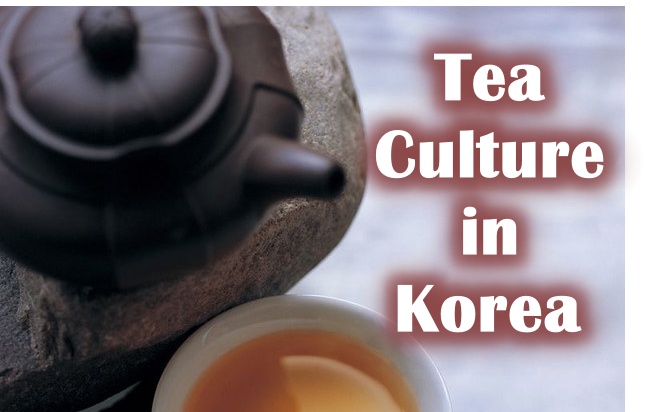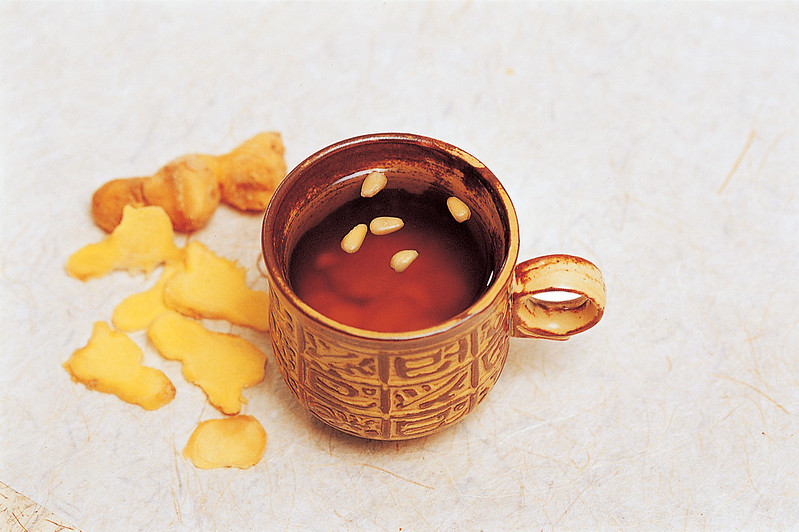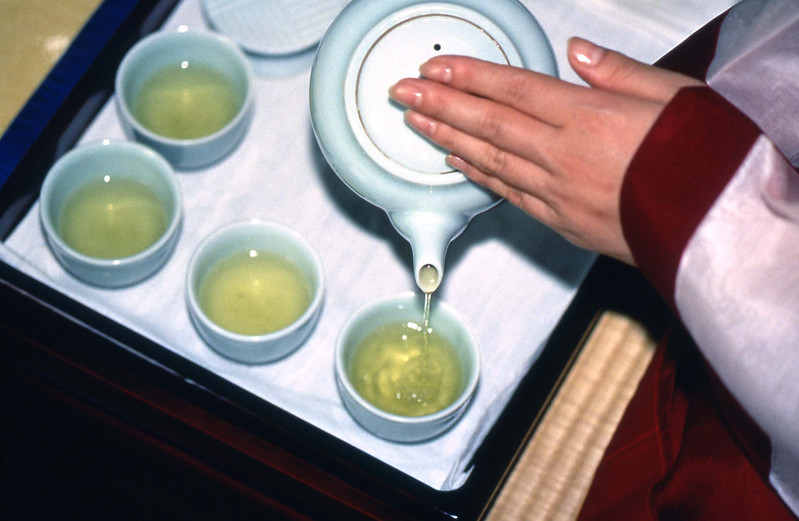- 한국어
- English
- 日本語
- 中文
- العربية
- Español
- Français
- Deutsch
- Pусский
- Tiếng Việt
- Indonesian
By Honorary Reporter Valeria Hernandez from Mexico
Photo = Korea.net Flickr

Tea culture is believed to have come to Korea during the Three Kingdoms period (18 B.C.-A.D. 660), though the import of tea from China began in the seventh century. According to Samgungyusa (Memorabilia of the Three Kingdoms) and Garakgukgi (a history of Garak State), tea and fruit were used in memorial services for ancestors.
Tea culture on the Korean Peninsula continued during the Goryeo Dynasty (918-1392) along with the development of Buddhist culture, spreading to the royal family, monks and nobles. As time passed, the manner of drinking and serving tea became an important part of etiquette for a family and their guests.
In Korea, tea is usually prepared with a variety of fruits, flowers, leaves, grains and roots to diversify flavors and tastes, as well as providing health benefits. In Korean culture, drinking tea is more than sipping a drink, but an experience requiring all five senses. The term for Korea's traditional tea ceremony, darye, literally means "tea rite."
One of Korea's most unique teas is yujacha (citron), which is popular worldwide and can be stored for up to two years. Over the decades, the tea has seen its flavors diversified.
This tea is believed to have many health benefits like alleviating the common cold and stomach problems, and its high content of vitamin C helps soothe inflammation and headaches.
Another traditional tea with a unique flavor is ssanghwacha, which was considered an herbal bath and consumed in the morning and at night during the Joseon Dynasty (1392-1910).

Ssanghwacha (Korea.net Flickr)
This popular medicinal tea is dark brown with a slightly bitter taste. Many people in Korea buy this tea pre-made, but the country still has places still serving freshly made versions.

Green tea (nokcha)
For those who love green tea, Hadong-gun County, Gyeongsangnam-do Province, is home to the nation's first green tea plantation with a history of over 1,200 years. This is where the first green tea trees brought from China were planted, and the Korean Record Institute has certified the plantation as the peninsula's first based on Silla Kingdom records.
The Tea Museum of Korea in Boseong-gun County, Jeollanam-do Province, displays the tea production process, utensils and tools from historical periods in showing the evolution of tea culture over time. In addition to Korea's tea culture, the museum features those of China, Europe and Japan.
The county is also home to the famous Daehan Dawon Tea Plantation, whose Boseong tea boasts a history going as far back as the Baekje Kingdom era (18 B.C.-A.D. 660).
enny0611@korea.kr
*This article is written by a Korea.net Honorary Reporter. Our group of Honorary Reporters are from all around the world, and they share with Korea.net their love and passion for all things Korean.